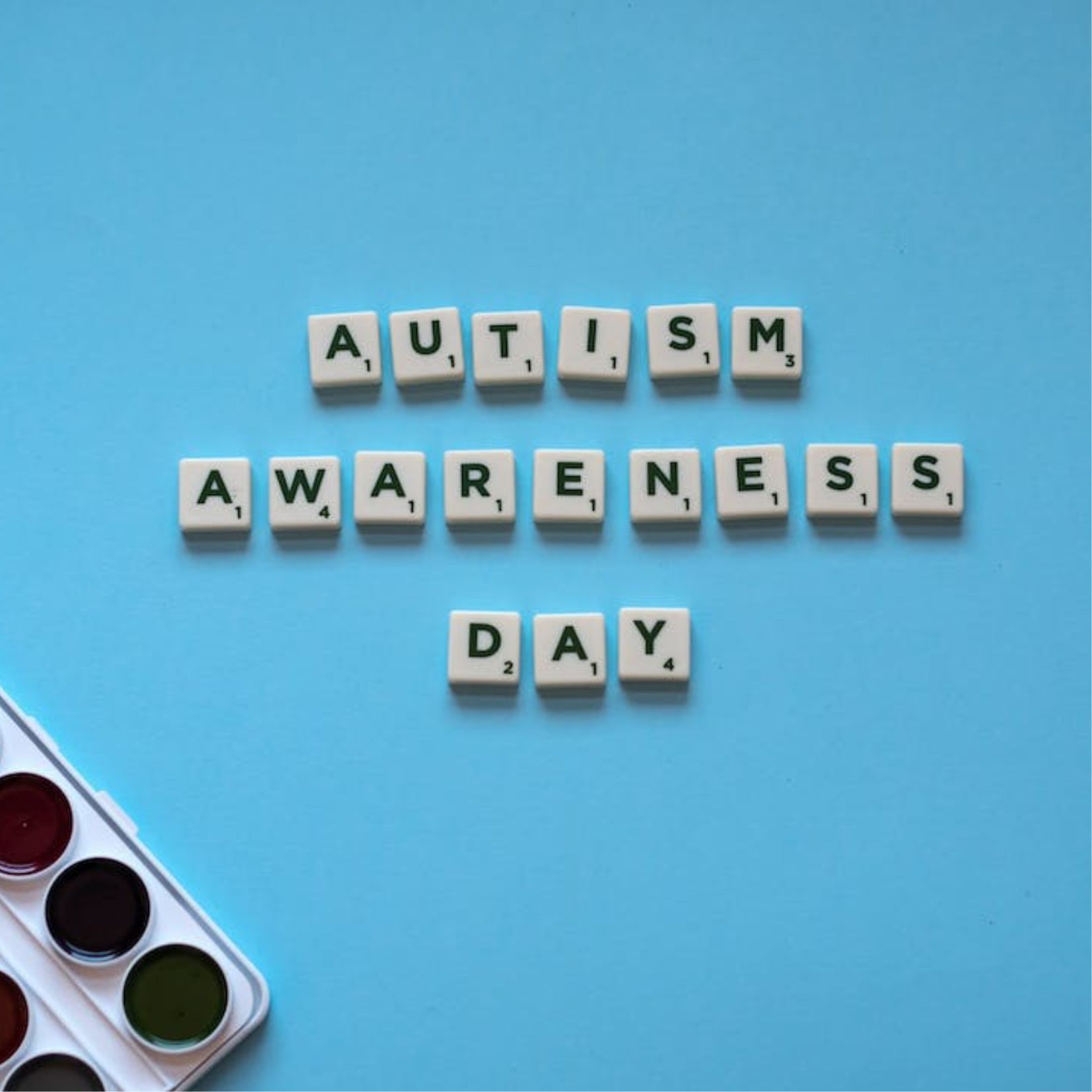
Every year on April 2nd, the world observes World Autism Awareness Day. This day is dedicated to raising awareness about autism spectrum disorder (ASD) and promoting inclusion and acceptance for people with autism.
ASD is a complex developmental condition that affects communication, social interaction, and behavior. It is estimated that 1 in 160 children worldwide has ASD, and the prevalence is increasing. Despite this, many people with autism face challenges in accessing services and support, and often experience discrimination and social exclusion.
The theme for World Autism Awareness Day 2023 is "Understanding and Accepting Neurodiversity." Neurodiversity refers to the natural variations in human neurological functioning, including autism, ADHD, dyslexia, and other conditions. It recognizes that these differences are not disorders or deficits, but rather part of the natural diversity of the human brain.
By promoting understanding and acceptance of neurodiversity, we can create a more inclusive and equitable society for all. This includes providing appropriate support and accommodations for people with autism, such as sensory-friendly environments, communication aids, and assistive technology.
It also involves challenging stereotypes and prejudices about autism and recognizing the strengths and talents of autistic individuals. Many people with autism have unique abilities in areas such as mathematics, music, and visual thinking. By embracing and celebrating these strengths, we can create a more positive and accepting attitude towards autism.
World Autism Awareness Day is an opportunity to raise awareness and promote understanding of autism and neurodiversity. It is a reminder that we must work together to create a world that is inclusive and accepting of all people, regardless of their neurological differences. By doing so, we can build a more diverse, resilient, and compassionate society for everyone.
Assistive technologies for people on the autistic spectrum
Assistive technologies can be an invaluable tool for people on the autistic spectrum, helping to support communication, sensory processing, and social interaction. Here are some examples of assistive technologies that can benefit individuals with autism:
-
Communication aids: Many people with autism struggle with communication, and may rely on alternative forms of communication such as pictures, symbols, or sign language. Communication aids such as speech-generating devices, picture exchange communication systems (PECS), or mobile apps can help individuals with autism to communicate more effectively.
-
Sensory tools: People with autism can be highly sensitive to sensory stimuli, such as noise, light, or touch. Sensory tools such as noise-cancelling headphones, weighted blankets, or fidget toys can help to regulate sensory input and reduce stress.
-
Social skills training apps: Social interaction can be challenging for people with autism, and social skills training apps can provide a safe and structured environment for learning social skills. These apps can help individuals with autism to practice communication, empathy, and other social skills.
-
Virtual reality therapy: Virtual reality therapy can be a useful tool for individuals with autism to practice real-life situations in a safe and controlled environment. For example, virtual reality therapy can be used to simulate social situations, such as job interviews or public speaking, and provide a platform for practicing social skills.
-
Autism-specific software: There are a range of software programs designed specifically for individuals with autism, including educational games, visual aids, and behavior management tools. These tools can help to support learning, improve behavior, and increase independence.
Assistive technologies can play a crucial role in supporting individuals with autism, enabling them to communicate, learn, and interact more effectively with the world around them. By providing access to these technologies, we can help to promote greater inclusion and independence for people on the autistic spectrum.
Interesting facts about Autism
Autism spectrum disorder (ASD) is a complex developmental condition that affects communication, social interaction, and behavior. Here are some interesting facts about autism:
-
Autism is more common than you might think: According to the Centers for Disease Control and Prevention (CDC), approximately 1 in 54 children in the United States has been diagnosed with autism.
-
Autism affects boys more than girls: Boys are four times more likely to be diagnosed with autism than girls. However, recent research suggests that girls with autism may be underdiagnosed due to differences in how they present symptoms.
-
Autism is a spectrum disorder: Autism is a spectrum disorder, which means that it affects individuals in different ways and to varying degrees. Some individuals with autism may have exceptional abilities in areas such as mathematics or music, while others may struggle with basic communication and social skills.
-
Autism is often accompanied by other conditions: Many individuals with autism also have other conditions, such as ADHD, anxiety, or epilepsy. This can make it challenging to diagnose and treat autism effectively.
-
Autism is a lifelong condition: While there is no cure for autism, early intervention and support can help individuals with autism to develop skills and abilities that will enable them to live fulfilling lives.
-
Autism has a strong genetic component: Research has shown that autism has a strong genetic component, with a heritability estimate of up to 90%. However, environmental factors may also play a role in the development of autism.
-
Autism is often diagnosed later in girls: Due to differences in how autism presents in girls, they are often diagnosed later than boys. This can delay access to important services and support.
-
Autism research is ongoing: There is still much to be learned about autism, and research into the causes, diagnosis, and treatment of autism is ongoing. Advances in technology and neuroscience are providing new insights into the condition and offering hope for more effective interventions in the future.
Characters with Autism
Representation of characters with autism in books, TV shows, and movies has increased in recent years, providing a more accurate portrayal of the diverse experiences of individuals with autism. Here are some notable characters with autism:
-
Shaun Murphy from "The Good Doctor": The main character, played by Freddie Highmore, is a surgical resident with autism and savant syndrome. The show depicts his struggles with social interaction and communication while highlighting his exceptional medical skills.
-
Sam Gardner from "Atypical": The Netflix series follows Sam, a high school student with autism, as he navigates friendships, relationships, and family dynamics. The show portrays the challenges and strengths of individuals with autism in a realistic and relatable way.
-
Christopher Boone from "The Curious Incident of the Dog in the Night-Time": The protagonist of Mark Haddon's novel is a 15-year-old boy with Asperger's syndrome who sets out to solve the mystery of a neighbor's murdered dog. The book offers an insight into the unique perspective of individuals with autism.
-
Julia from "Sesame Street": Julia is a muppet with autism who was introduced to Sesame Street in 2017. The character helps to promote awareness and acceptance of autism by teaching children about the challenges and strengths of individuals with autism.
-
Abed Nadir from "Community": Abed, played by Danny Pudi, is a college student with Asperger's syndrome who struggles with social interaction but excels in filmmaking and pop culture trivia. The show depicts the challenges and joys of friendship and community for individuals with autism.
These characters, and others like them, provide a more nuanced and accurate portrayal of individuals with autism, helping to promote greater awareness and understanding of the condition. By showcasing the strengths and challenges of individuals with autism, these characters help to promote greater acceptance and inclusion for people on the spectrum.
Filmography on Autism
There are many films and documentaries that explore the experiences of individuals with autism. Here are some notable examples:
-
"Rain Man" (1988): Starring Tom Cruise and Dustin Hoffman, "Rain Man" is a classic film that follows Charlie, a selfish businessman, as he takes a road trip with his autistic brother Raymond. The film helped to raise awareness of autism and earned Hoffman an Academy Award for his portrayal of Raymond.
-
"Temple Grandin" (2010): This biographical drama tells the story of Temple Grandin, an autistic woman who became a leading advocate for animal welfare and an expert in the field of livestock handling. The film, starring Claire Danes, received critical acclaim and multiple Emmy Awards.
-
"Life, Animated" (2016): This documentary follows the story of Owen Suskind, a young man with autism who learned to communicate and understand the world through his love of Disney films. The film, directed by Roger Ross Williams, won the Sundance Film Festival Directing Award.
-
"The Reason I Jump" (2020): Based on the bestselling book by Naoki Higashida, "The Reason I Jump" is a documentary that explores the experiences of non-verbal individuals with autism. The film, directed by Jerry Rothwell, offers a unique perspective on autism and has been praised for its sensitivity and insight.
-
"Please Stand By" (2017): Starring Dakota Fanning, "Please Stand By" follows a young woman with autism who runs away from home to enter a writing contest. The film highlights the challenges and strengths of individuals with autism and has been praised for its authenticity and heartwarming story.
These films, and others like them, offer a glimpse into the experiences of individuals with autism and provide a valuable perspective on the condition. By sharing these stories, filmmakers and documentarians can help to promote greater awareness and understanding of autism, and encourage greater acceptance and inclusion for individuals on the spectrum.
How to celebrate World Autism Awareness Day?
World Autism Awareness Day is celebrated on April 2nd every year to promote awareness and understanding of autism, and to advocate for the rights of individuals with autism. Here are some ways to celebrate World Autism Awareness Day:
-
Wear blue: Blue is the color associated with autism awareness, so wearing blue clothing or accessories on April 2nd is a simple way to show your support for individuals with autism.
-
Share information: Share information about autism with your friends and family, whether it's through social media, email, or in-person conversations. Raise awareness by sharing facts, stories, and resources about autism.
-
Attend an event: Many organizations and communities host events on World Autism Awareness Day, such as walks, runs, and awareness campaigns. Look for local events in your area or attend virtual events to support the cause.
-
Donate to a charity: Consider donating to a charity that supports individuals with autism or autism research. Many organizations have special fundraising events or campaigns on World Autism Awareness Day.
-
Educate yourself: Take the time to learn more about autism and the experiences of individuals on the spectrum. Read books, watch documentaries, or attend webinars to increase your understanding and empathy for individuals with autism.
-
Show support: Show your support for individuals with autism by volunteering at a local organization or offering to assist a family with a child on the spectrum. Small gestures can make a big difference in the lives of those affected by autism.
Overall, the goal of World Autism Awareness Day is to promote acceptance, inclusion, and understanding of autism. By taking action and showing support, we can make a positive impact on the lives of individuals with autism and their families.
Recommended articles

